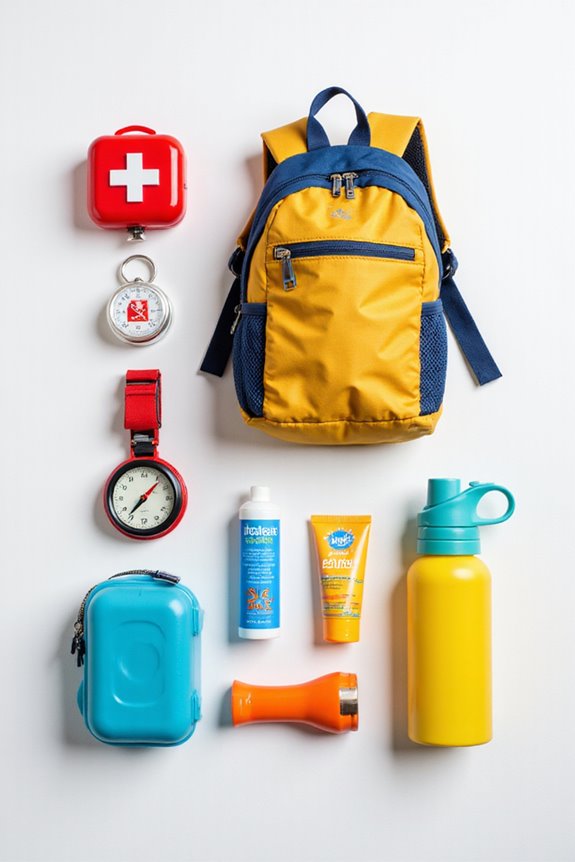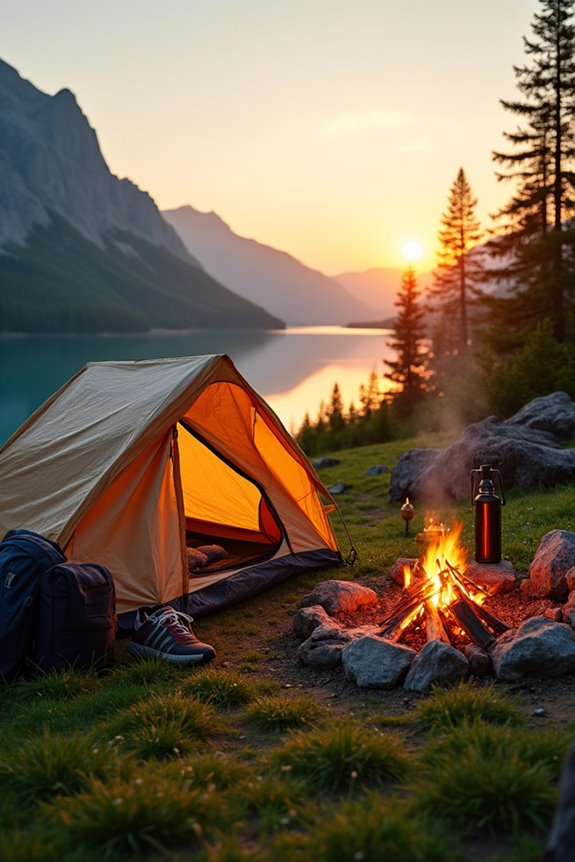Teaching kids about outdoor safety starts with understanding real versus perceived risks. Encourage exploration, but show them how to assess their surroundings. Role-playing games can help kids practice, while fun activities like biking or climbing promote confidence. Discuss safety gear use, and share personal stories after a fall, showing that mistakes happen. Community support matters too, so advocate for safe play spaces. With a bit of creativity, outdoor adventures can be both thrilling and safe. Want to learn more tips?
Key Takeaways
- Role-play safety scenarios to help children practice assessing and responding to outdoor risks effectively.
- Demonstrate proper gear usage and safe falling techniques to ensure children understand how to protect themselves.
- Use teachable moments during outdoor activities to connect safety practices with real-life experiences.
- Involve children in discussions about safety guidelines to build their confidence and awareness while playing outside.
- Organize safety workshops to engage families and promote community support for outdoor exploration.
Understanding Real vs. Perceived Risks
When exploring the great outdoors, it’s easy to get caught up in the whirlwind of what might happen, especially when parents and educators are involved. Understanding real risks versus perceived risks can help ease those worries. Educators are beginning to recognize that outdoor play isn’t just a playground for danger; it’s a chance for children to grow, learn, and develop skills. For instance, while a child racing down a slide might seem risky, the real danger often comes from poorly maintained equipment. As parents, it’s crucial to embrace the idea that many fears are inflated. By educating ourselves about actual risks, we can foster an environment where kids learn to navigate challenges, balancing thrill and safety in their outdoor adventures.
Engaging Children in Outdoor Play
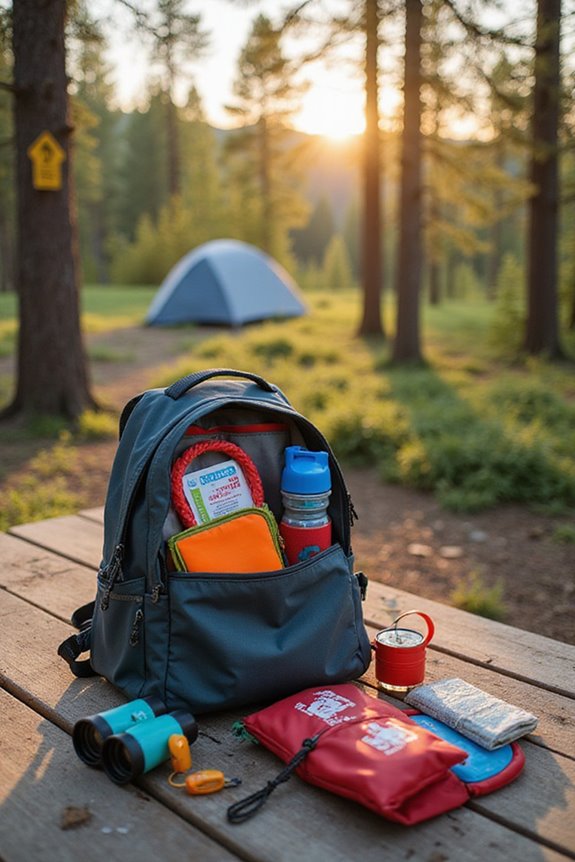
How can a patch of grass transform into a canvas for adventure? Picture children sprinting, climbing, and jumping, their laughter echoing through the air. Outdoor exploration not only ignites their imagination but also brings a treasure trove of playfulness benefits. As they swing and bike, they develop motor skills and muscle strength, all while soaking up that glorious vitamin D. This sunny playtime boosts their immune systems, making them more resilient against those pesky colds. Plus, traversing their neighborhood independently fosters confidence and social skills, helping them forge friendships that last. The beauty of outdoor play lies in its ability to create joyful memories, nurture emotional well-being, and stimulate cognitive growth, all while reminding children of the world’s wonders just outside their doors.
Effective Teaching Methods for Safety

Effective teaching methods for safety can make a world of difference in how children navigate the outdoors. Engaging kids through role playing scenarios can be particularly effective. Imagine a group of children pretending to encounter a wild animal; they learn to assess the situation and respond safely. Safety demonstrations also play an essential role, showcasing proper use of gear and how to fall safely on outdoor surfaces—like a crash landing in a cartoon! Additionally, using teachable moments helps connect everyday experiences to safety practices. For instance, when they spot a slippery rock, they grasp the importance of caution. When children are actively involved in these learning experiences, they build confidence and awareness, making outdoor adventures not just fun, but safe too!
Overcoming Barriers to Outdoor Play
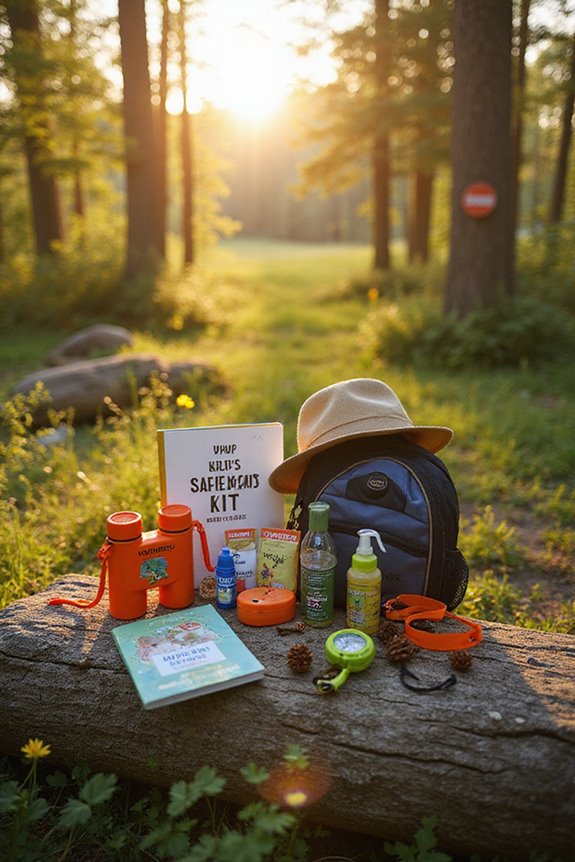
While many children today seem glued to their screens, the reality is that outdoor play remains an essential part of childhood development. Overcoming barriers to outdoor play requires community engagement and a shift in cultural values. Parents often worry about neighborhood safety, fearing traffic or crime; these concerns can limit children’s freedom to explore. Additionally, the lack of nearby parks or safe green spaces can make outdoor activities feel like a distant dream. Busy schedules, filled with organized sports or screen time, further crowd out spontaneous play. However, fostering a supportive community can help families feel more at ease, encouraging them to prioritize outdoor adventures. When neighborhoods come together, they create safe spaces for children to reconnect with nature, fostering joy and discovery.
Recommendations for Parents and Educators
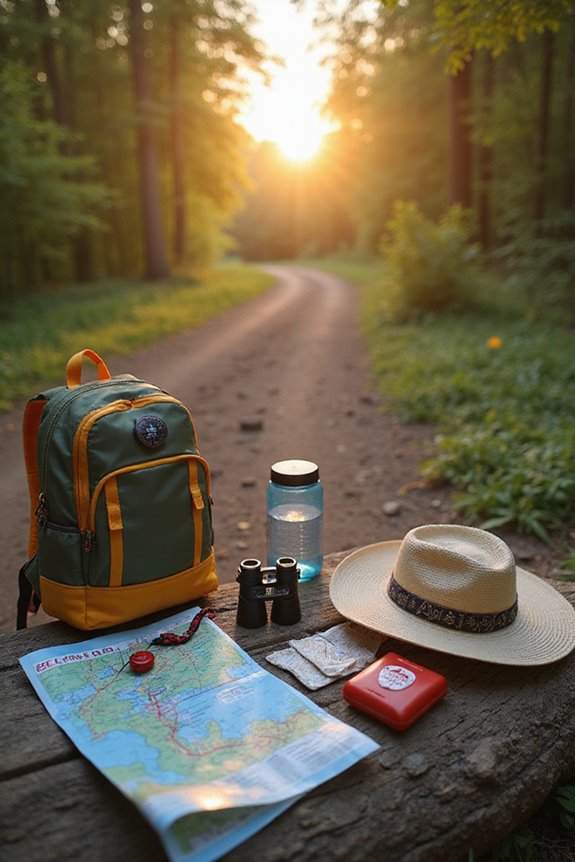
What if every parent and educator felt empowered to transform outdoor play into a safe and enjoyable experience for kids? By integrating year-round safety education, they can enhance children’s experiences outside. Using diverse methods like engaging videos and interactive discussions, safety guidelines can be effectively communicated. It’s vital to include parental involvement, as parents play a significant role in modeling safe behaviors. Encourage families to participate in safety workshops, making it a community affair. Additionally, promoting regular outdoor play, even with a sprinkle of risk, supports development and fosters resilience. Emphasizing the fun of adventure while teaching kids how to navigate their environment safely creates a balance. Ultimately, a united effort can cultivate a generation that embraces the outdoors confidently.
Frequently Asked Questions
What Age Should Children Start Learning About Outdoor Safety?
Children should begin learning about outdoor safety around preschool age, aligning with age milestones. Early experiences, particularly in toddler safety, foster awareness and understanding of hazards, promoting safe exploration as they develop independence.
How Can I Encourage My Child to Play Outside More?
Encouraging outdoor exploration can foster nature appreciation and boost children’s physical and social development. Creating inviting play environments and allowing independent mobility enhances their desire to engage with the outdoors, promoting healthier lifestyles and emotional well-being.
What Are Some Fun Outdoor Safety Games for Kids?
Fun outdoor safety games for kids include a safety scavenger hunt, where they search for safe items, and an outdoor obstacle course, promoting physical agility while teaching risk assessment and safe navigation through various challenges.
How Do Cultural Beliefs Affect Children’s Outdoor Play?
Cultural perspectives shape children’s play environments, where vibrant parks beckon some, while others face barriers of safety fears. These beliefs dictate outdoor freedom, influencing how children engage with nature and each other in diverse communities.
What Role Do Schools Play in Promoting Outdoor Safety?
Schools play an essential role in promoting outdoor safety through structured programs and safety workshops. These initiatives educate students on hazard recognition, safe play behavior, and the importance of protective gear in various outdoor environments.

